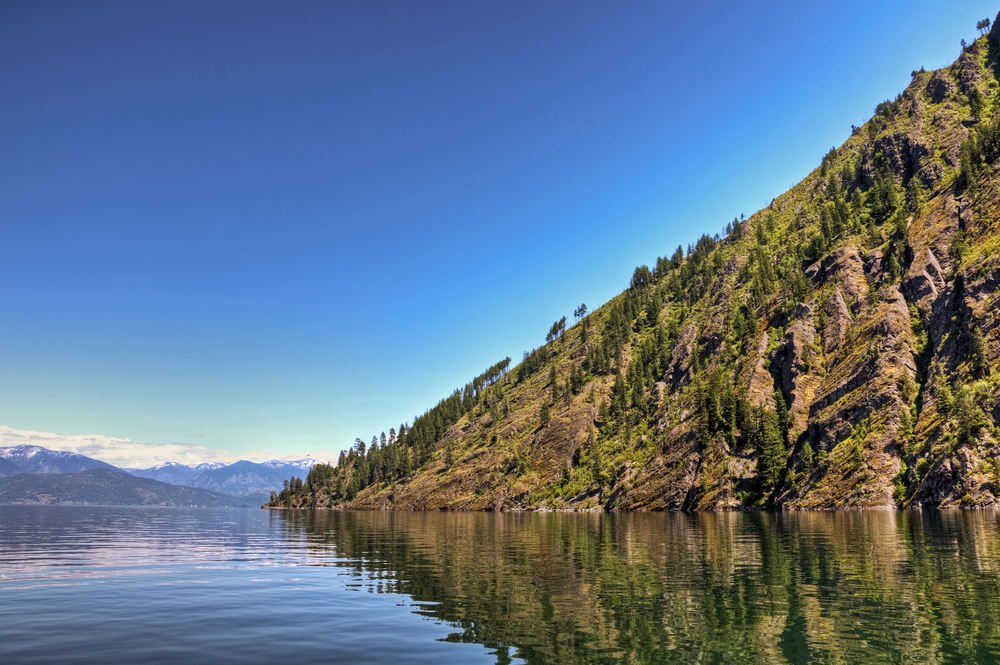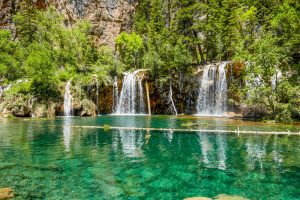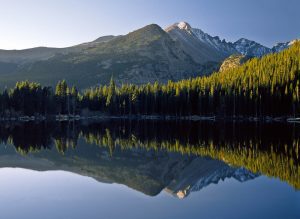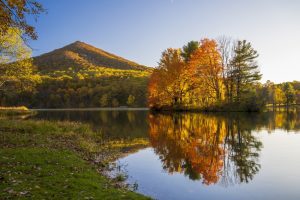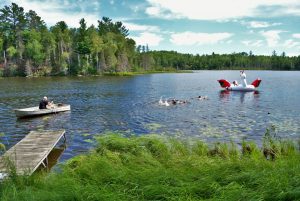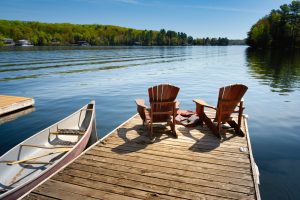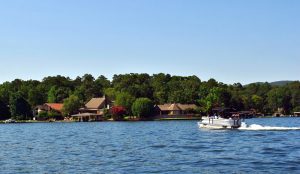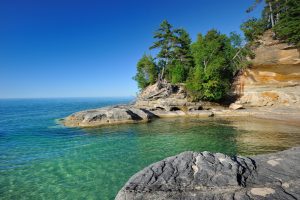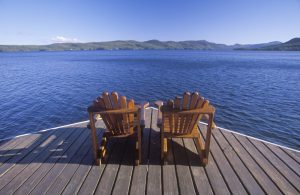As a Rocky Mountain state, Idaho is home to numerous bodies of water of varying sizes. This includes 199 lakes, which are spread out around the state with a strong concentration in the center.
The biggest lake in Idaho is Lake Pend Oreille, with a surface area of 148 square miles (or 38,000 hectares) and 111 miles of shoreline.
For comparison, this is more than four times the size of the island of Manhattan. Though the lake is relatively far from Idaho’s biggest cities, it is a popular spot for outdoor activities, particularly in summer.
Table of Contents
Where in Idaho is Lake Pend Oreille?
Lake Pend Oreille is located in the northern Idaho panhandle. This is a relatively narrow portion of the state that extends up between the states of Washington and Montana and is bordered by Canada on the northern side.
The southern tip of the lake lies within Farragut State Park, while part of the northwestern portion borders Kaniksu National Forest.

Lake Pend Oreille is mostly in Bonner County but also falls within Kootenai County. The lake is surrounded by mountains, many of which have summits over 6,000 feet above sea level.
The lake itself sits just above 2,000 feet above sea level.
What is the nearest city to Lake Pend Oreille?
Several towns lie within 10 miles of the lake and have populations varying from a few hundred residents to several thousand.
These are the towns of Kootenai, Hope, East Hope, Ponderay, and Sandpoint, all of which are located within Bonner County.
Sandpoint is the largest town in the county and is on the lake, with more than 8,000 residents as of the 2020 census.
As far as Idaho’s larger cities go, Lake Pend Oreille is 50 miles away from Coeur d’Alene and 427 miles away from Boise.
Where did Lake Pend Oreille get its name?
Although native peoples moved into the area hundreds of years earlier, it was in 1809 that the first written records of Lake Pend Oreille appear.
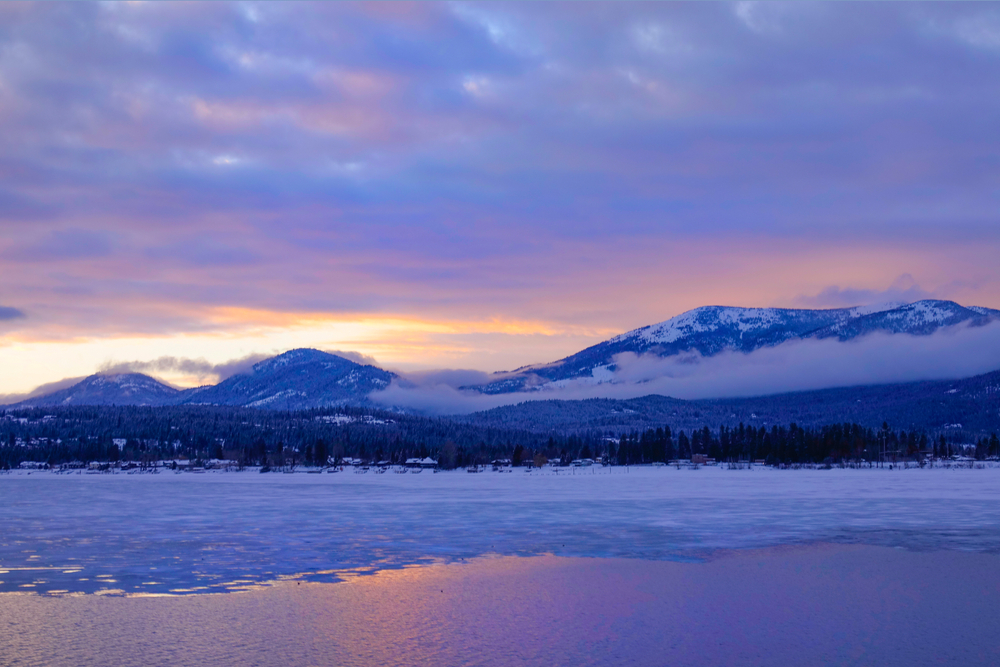
Canadian explorer and fur trader David Thompson is credited with this, describing the lake as a future major destination for humans: “The impression of my mind is, from the formation of the country and its climate, its extensive Meadows and fine forests, watered by countless brooks and Rills of pure water, that it will become the abode of civilized Man, whether Natives or other people.”
Thompson is likewise credited with naming the lake, first calling it “Kullyspel Lake” after the local Kalispel Native American tribe.
The name changed not long after, and it is believed that either he or a crew member gave it the French name “Pend d’Oreille” or “ear pendant.”
Whether this name was in reference to Native American jewelry or the shape of the lake itself, it isn’t clear.
What is the geological history of Idaho’s biggest lake?
Lake Pend Oreille is a long and skinny lake with its upper sides branching outwards (like a giant ‘T’ or a lazy ‘J’).
The lake was formed by a receding glacier during the ice age. Scientists also theorize that the eastern portion of the lake was formed specifically by the ancient Missoula floods at the end of the ice age.
Numerous fossils have been found in and near the lake, particularly Spence shale with visible trilobites.
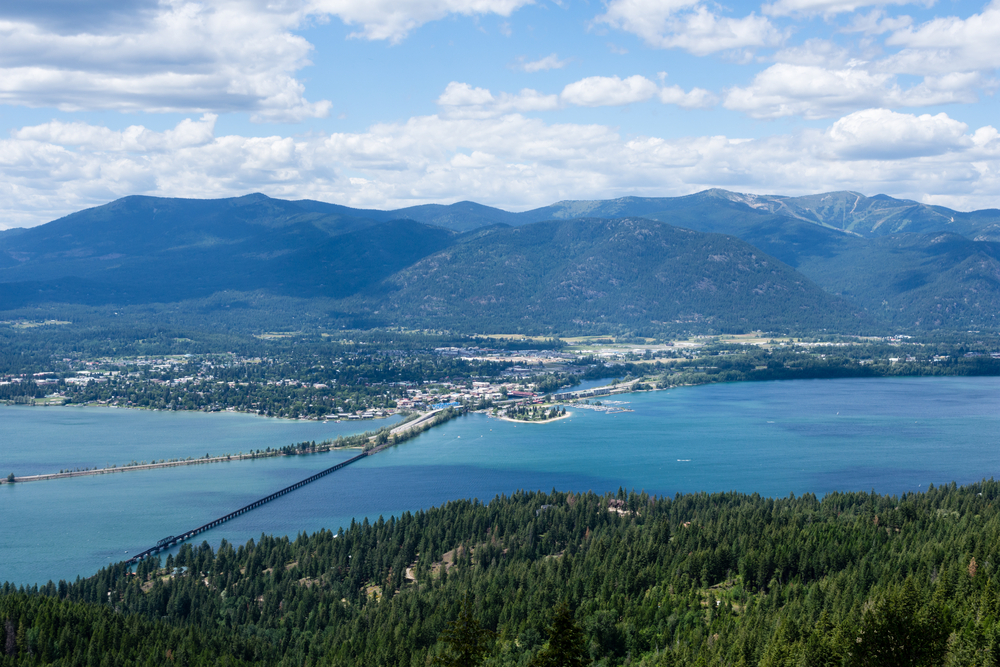
A deep trench runs along the center of the lake, which is believed to have once been a mountain valley.
How wide is Lake Pend Oreille?
Lake Pend Oreille spans 4 miles across. At its longest point, however, the lake travels north to south for 40 miles.
Its width may fluctuate slightly throughout the year due to depth changes.
How deep is Lake Pend Oreille?
Like most lakes, Pend Oreille is shallower near the shore and deeper in the middle (where a long trench lies).
At its deepest, the lake’s bottom is 1,150 feet below the surface.
That said, the lake’s depth fluctuates at different times of the year. It is purposely lowered (via a dam) by more than 100 feet during the winter to make access easier and to help keep conditions safe for nearby residents.
Are any rivers connected to Lake Pend Oreille?
Like other naturally formed lakes, Pend Oreille is connected to rivers. The lake is fed by both the Clark Fork River and the Pack River, flowing into the Pend Oreille River.
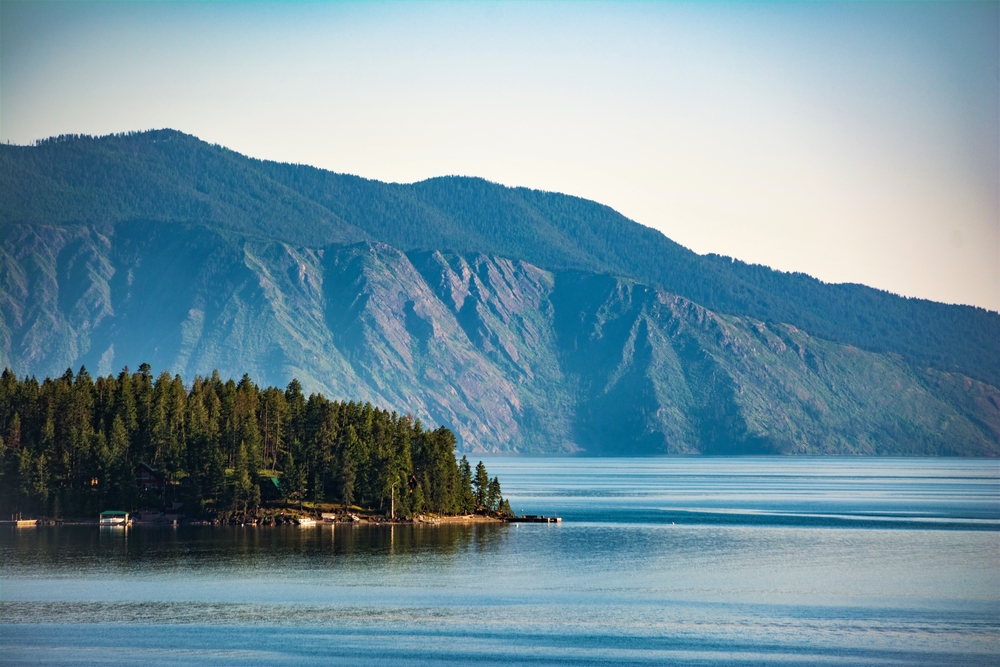
This drains into the Columbia River, which eventually makes its way out to the Pacific Ocean.
Does Lake Pend Oreille have fish?
Lake Pend Oreille is stocked by local fishing organizations and is a very popular destination for fishing in northern Idaho.
According to the Idaho wildlife agency, the lake is particularly used to support the populations of native fish species, including the Westslope cutthroat trout and the bull trout.
The lake is also routinely stocked with over 10 non-native species of fish, including standard lake trout (Mackinaw), and German brown trout.
This is primarily to promote fishing tourism since Westslope cutthroat trout and bull trout are usually catch-and-release for much of the fishing season.
Multiple invasive fish are also in the lake, including the Eurasian watermilfoil and the Walleye (also called the Yellow Pike).
Is Lake Pend Oreille open to visitors?
The lake is open to visitors year-round, although safety warnings and certain area restrictions often go into effect during the winter months.
The lake itself is a hotspot for fishing and boating, while nearby areas along the shoreline are popular with hikers and campers.
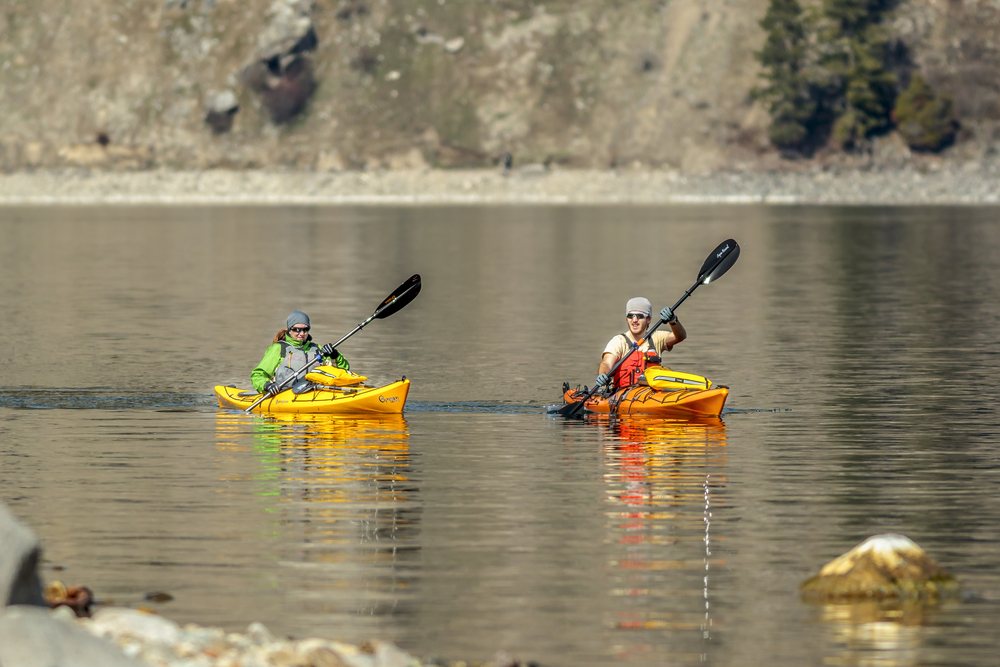
Certain parts of the shoreline are also popular swimming spots from July to August, with water temperature typically hovering around 68 degrees F.
Is Idaho known for its lakes?
Idaho has vast swathes of protected nature areas, and it is a state known for its rugged beauty.
That said, Idaho is not necessarily known for its bodies of water and does not rank among the top 10 states with the most lakes.
With 199 lakes, the state is far behind states like Alaska (with over 3,000 lakes) and Minnesota (over 1,000).
How does Lake Pend Oreille stack up to the largest lakes in other states?
Lake Pend Oreille is the 38th biggest lake in the United States as far as area goes. It is also the fifth-deepest lake in the nation, surpassed only by Lake Superior of the Great Lakes, Lake Chelan in neighboring Washington state, California’s Lake Tahoe, and Crater Lake in Oregon.
Lake Pend Oreille is also considered one of the calmest and “quietest” large lakes in the U.S. Storms are infrequent, and water pattern fluctuations tend to be mild (compared to the Great Lakes, which experiences waves and other kinds of turbulence).
Are there sunken ships in the lake?
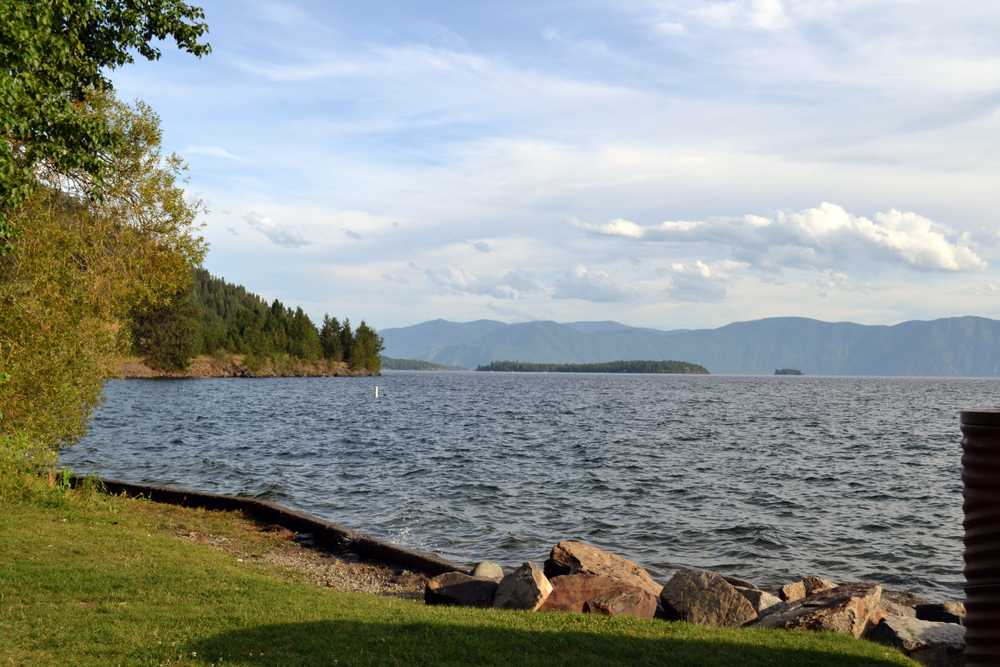
Lake Pend Oreille has become home to numerous sunken boats and small ships over the centuries, many of which are frequented by scuba divers (another popular activity during summertime).
The lake is also interestingly the final resting spot of a series of railway cars that fell into the water in 1904.
The cars sit over 100 feet below the surface.
What are Lake Pend Oreille’s biggest industries?
Tourism (especially in the town of Sandpoint) and recreation is one of the lake’s biggest industries by far.
Fishing (both recreational and commercial) also has a major presence, as do other outdoor recreational activities.
The southern portion of the lake also houses the NSWCCD Acoustic Research Detachment, a major aquatic research operation run by the United States Navy.

